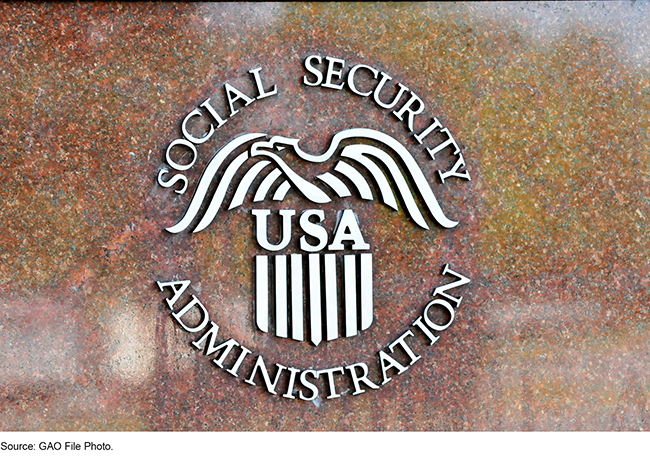SSA Disability Programs: Work Incentive and Modernization Challenges Remain
Fast Facts
Social Security's two largest disability programs provided about $170 million in benefits to more than 11 million working-age adults in 2022. Some disability beneficiaries want to return to work.
We testified about three key issues beneficiaries face that may disincentivize them from working. For example, beneficiaries may be overpaid if SSA doesn't adjust their benefits when they return to work and have trouble paying it back. And SSA's complex rules about work may deter some.
SSA is struggling to modernize to address such issues and hasn't yet fully addressed our prior recommendations on overpayments.

Highlights
What GAO Found
Previous GAO reports have consistently found three key disincentives to work faced by Social Security Administration (SSA) Disability Insurance (DI) and Supplemental Security Income (SSI) beneficiaries: (1) loss of cash and medical benefits, (2) overpayments, and (3) complexity of rules surrounding work.
- Loss of cash and medical benefits. When disability beneficiaries return to work and earn income, they must report these earnings to SSA so that their benefits can be adjusted. As detailed in prior GAO reports, disability beneficiaries who earn over a certain income threshold may be at risk of eventually losing their cash and medical benefits. This risk triggers fear among beneficiaries that they will lose these benefits—a key impediment to incentivizing increased work.
- Overpayments. Another disincentive to returning to work is the potential for benefit overpayment, which can result in beneficiaries incurring debt to SSA. Overpayments can occur when beneficiaries fail to report earnings or SSA delays processing changes in earnings, and beneficiaries continue to receive benefits. A 2019 SSA publication estimated that 70 to 80 percent of DI beneficiaries with earnings sufficient to affect their benefits received overpayments. These overpayments can amount to thousands of dollars—a hardship for many.
- Complexity of rules surrounding work. GAO reported in 2021 that an expert panel convened by SSA found that the complexity of work rules constituted a barrier to returning to work for beneficiaries and an administrative challenge.
SSA has been attempting to address work disincentives, but these efforts have yielded limited results. For example, SSA has undertaken numerous research efforts—known as demonstrations—to test changes to its disability programs that could encourage disabled beneficiaries to work. However, academic research determined that 11 of these demonstrations resulted in little savings and almost no beneficiaries exiting the DI program.
SSA is taking steps to prevent overpayments. In its most recent annual performance report, SSA outlines its plans to automatically collect wage information from payroll data providers and to modernize its debt management system. GAO has also made several recommendations to address overpayments. Three of these are not yet implemented, including a 2015 priority recommendation to strengthen internal controls to prevent DI overpayments due to concurrent receipt of Federal Employees' Compensation Act (FECA) benefits.
GAO has previously reported that SSA has struggled to address challenges and modernize its disability programs. Accordingly, SSA's disability programs have been on the GAO High Risk List since 2003. Among the additional challenges are improving disability claims processing, retaining experienced staff, and updating occupational data to evaluate the capacity for work.
Why GAO Did This Study
In 2022, over 11 million working-age adults received approximately $170 billion in disability benefits from SSA's DI and SSI programs—two of the largest federal disability programs. DI provides benefits to individuals with disabilities who have a qualifying work history whereas SSI gives benefits to those with disabilities who have low income and limited resources. SSA has undertaken several efforts to encourage employment for individuals who receive disability benefits and want to work.
This testimony describes: (1) the incentive structure SSA beneficiaries face in returning to work, and (2) SSA's challenges in overcoming work disincentives and modernizing its disability programs. This statement is based on reports GAO issued from 2008 to 2024, relevant SSA and Inspector General reports, and academic research. GAO also conducted follow-up work on implementation of its prior recommendations.
Recommendations
SSA needs to fully implement GAO's three recommendations to address overpayments. Implementation of the priority recommendation to strengthen internal controls related to the concurrent receipt of DI and FECA benefits is particularly important to reducing overpayments.
